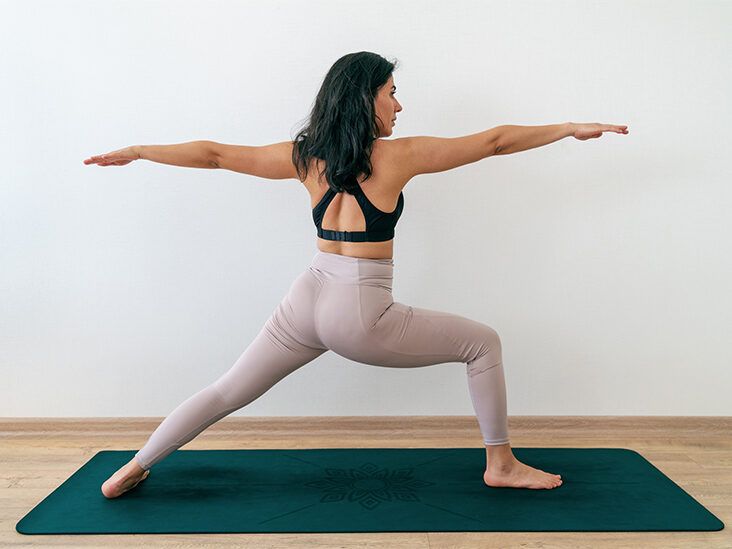
Chronic pain can be debilitating, affecting every aspect of daily life. However, there is hope for those seeking relief.
In this article, we explore the transformative power of yoga therapy as a means to break free from the grips of chronic pain. Backed by scientific evidence and guided by a desire for freedom, we present 10 lifestyle changes enhanced by yoga therapy that can alleviate pain, promote healing, and empower individuals to reclaim control over their bodies and lives.
Personalized Yoga Routines
How can personalized yoga routines be tailored to effectively alleviate chronic pain?
One of the key components of yoga therapy is its personalized approach, which allows for an individualized practice that considers the specific needs and limitations of each person. By tailoring the practice to address the root causes of chronic pain, yoga can provide targeted relief and long-term healing.
A personalized approach to yoga for chronic pain involves a thorough assessment of the individual's physical condition, medical history, and lifestyle factors. This assessment helps determine the most suitable yoga postures, breathing techniques, and relaxation exercises to alleviate pain and promote healing. For example, individuals with lower back pain may benefit from gentle stretching exercises that target the muscles supporting the spine, while those with joint pain may focus on improving flexibility and range of motion.
Yoga therapists work closely with individuals to design a practice that is safe, effective, and empowering. They guide clients through proper alignment, modifications, and adaptations to ensure that each pose and movement is tailored to their unique needs. This individualized approach allows for a gradual progression, ensuring that individuals are challenged but not overwhelmed, and that they can experience the benefits of yoga without exacerbating their pain.
Research supports the effectiveness of personalized yoga routines in relieving chronic pain. A study published in the Journal of Pain Research found that a personalized yoga program resulted in significant improvements in pain intensity, physical function, and quality of life in individuals with chronic low back pain. Another study published in the Journal of Rheumatology found that a tailored yoga program was effective in reducing pain and disability in individuals with fibromyalgia.

Body Alignment
Proper body alignment is crucial for overall health and well-being. When we maintain good posture, it benefits our muscles, joints, and organs, reducing the risk of chronic pain and injury.
Yoga therapy can play a vital role in improving body alignment, as it focuses on strengthening and stretching the muscles to achieve optimal alignment and posture.
Proper Posture Benefits
Enhancing body alignment through proper posture benefits individuals in managing chronic pain.
Yoga and balance play a vital role in promoting optimal body alignment. By practicing yoga, individuals can improve their posture and reduce pain caused by misalignment. Yoga poses and exercises help strengthen the core muscles that support the spine, leading to improved posture and reduced strain on the body.
Additionally, incorporating ergonomics into daily activities can also contribute to pain relief. By maintaining proper alignment while sitting, standing, and performing tasks, individuals can avoid putting unnecessary stress on their muscles and joints. This can help alleviate chronic pain and promote overall well-being.
Embracing proper posture as a lifestyle change can empower individuals to break free from chronic pain and enjoy a life of freedom and comfort.
Alignment Aids Pain Relief
Furthermore, why is body alignment important for pain relief and how does it aid in breaking free from chronic pain?
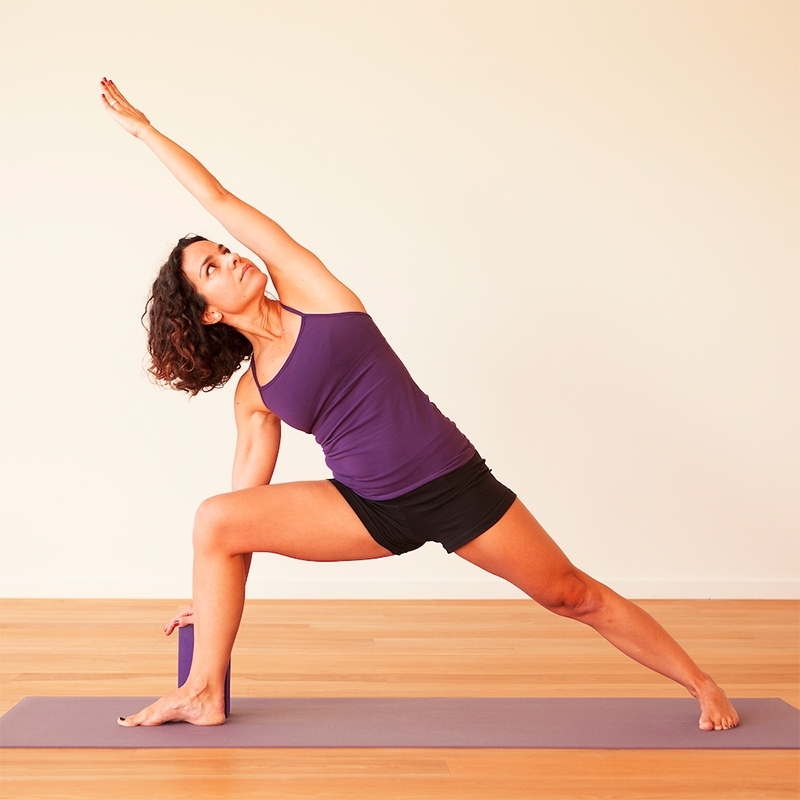
Proper body alignment is crucial for pain relief and overall well-being. When the body is properly aligned, it allows for optimal distribution of weight, reduces strain on muscles and joints, and promotes efficient movement.
Here are three ways that body alignment can aid in pain relief and help individuals break free from chronic pain:
- Improved posture: Aligning the body properly helps to improve posture, which in turn reduces strain on the spine, muscles, and joints. This can alleviate pain caused by poor posture and promote a healthier, more balanced alignment.
- Reduced muscle tension: Proper alignment helps to minimize tension in the muscles, reducing the risk of muscle imbalances and chronic pain. It allows for better muscle coordination and function, leading to improved pain management.
- Enhanced joint stability: When the body is aligned correctly, the joints are able to function optimally, reducing the risk of joint pain and instability. This can be particularly beneficial for individuals with conditions such as arthritis or joint injuries.
Yoga for Body Alignment
Yoga therapy incorporates specific techniques to promote proper body alignment during practice. Maintaining proper alignment is crucial not only for preventing injuries but also for maximizing the benefits of yoga for flexibility and stress relief.
When the body is aligned correctly, it allows for the optimal distribution of weight and the efficient engagement of muscles. This can help to alleviate tension and strain on the joints, reducing the risk of pain and injury. Additionally, proper alignment helps to create space in the body, allowing for improved circulation and increased mobility.
Therapeutic Yoga Props
Therapeutic yoga props offer a wide range of supportive tools that can enhance the effectiveness of yoga therapy for individuals seeking relief from chronic pain. These props are designed to provide extra support, stability, and comfort during therapeutic yoga practices, making it easier for individuals to practice yoga and experience the benefits of this alternative pain management approach.
Here are three commonly used therapeutic yoga props:
- Yoga blocks: These foam or cork blocks can be used to provide support and stability in poses where flexibility or balance is a challenge.
- Yoga straps: Straps help individuals achieve proper alignment in poses by increasing reach and allowing for a safe and effective stretch.
- Bolsters: These large, firm cushions provide support and relaxation during restorative yoga poses, allowing individuals to release tension and find comfort.
Pain Coping Strategies
To effectively manage chronic pain, individuals can adopt various pain coping strategies that complement the practice of yoga therapy. Pain management is a crucial aspect of living a fulfilling and active life, and it is essential to explore alternative therapies that can provide relief. Yoga therapy, combined with these coping strategies, can help individuals break free from the chains of chronic pain and experience a newfound sense of freedom.

One effective pain coping strategy is mindfulness meditation, which involves focusing one's attention on the present moment without judgment. This practice has been shown to reduce pain intensity and improve overall well-being.
Another strategy is deep breathing exercises, which can help calm the nervous system and reduce pain perception. Additionally, engaging in regular physical activity, such as walking or swimming, can release endorphins and alleviate chronic pain.
Other pain coping strategies include cognitive-behavioral therapy, which helps individuals reframe negative thoughts and beliefs about pain, and relaxation techniques like progressive muscle relaxation or guided imagery. These techniques can promote relaxation and reduce muscle tension, leading to pain relief.
Incorporating these pain coping strategies into one's lifestyle can greatly enhance the benefits of yoga therapy and contribute to a more holistic approach to pain management. By exploring alternative therapies and adopting these strategies, individuals can take control of their chronic pain and find freedom from its limitations.
Pain-Specific Yoga Exercises
Pain-specific yoga exercises are targeted movements and poses designed to provide relief for chronic pain. These exercises focus on stretching, strengthening, and releasing tension in specific areas of the body that are commonly affected by pain, such as the back, neck, and joints.
Targeted Pain Relief
Yoga exercises designed to alleviate specific sources of pain offer targeted relief for individuals with chronic pain. These pain-specific yoga exercises tap into the mind-body connection and provide a holistic approach to pain management. By incorporating alternative therapies such as yoga into their daily routine, individuals can experience a newfound sense of freedom from chronic pain.
Here are three pain-specific yoga exercises that can provide targeted relief:

- Backbends: Backbends help release tension in the spine and alleviate lower back pain. Poses such as Cobra, Bridge, and Camel pose can strengthen the back muscles and improve flexibility.
- Twists: Twisting poses like Supine Twist and Seated Twist can relieve tension in the back and spine, helping to reduce pain caused by muscle tightness or spinal misalignment.
- Hip openers: Hip-opening poses like Pigeon pose and Butterfly pose can help alleviate hip pain by stretching and releasing tension in the hip joints.
Yoga for Chronic Pain
Individuals with chronic pain can find relief through targeted yoga exercises designed to alleviate specific sources of pain. Yoga poses and pain management techniques can be effective in reducing pain and improving overall well-being.
One such pose is the Child's Pose, which gently stretches the lower back and hips, providing relief for those suffering from lower back pain.
Another beneficial pose is the Cat-Cow stretch, which helps to improve flexibility and mobility in the spine, relieving pain associated with conditions such as arthritis.
Additionally, the Downward Facing Dog pose can help to lengthen and stretch the spine, providing relief for individuals with chronic neck and shoulder pain.
These pain-specific yoga exercises not only target the physical aspects of pain but also promote relaxation and stress reduction, enhancing the body's natural healing process.
Incorporating these targeted yoga poses into a regular practice can bring about significant relief and empower individuals to break free from the grip of chronic pain.
Relaxation Techniques
Practicing deep breathing exercises can be a helpful relaxation technique for managing chronic pain. When we are in pain, our bodies tend to tense up, which can exacerbate the discomfort. Deep breathing techniques, such as diaphragmatic breathing or belly breathing, can help to relax the muscles and promote a sense of calmness.
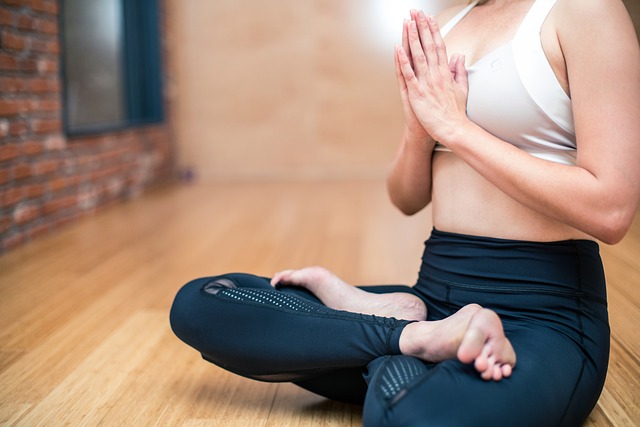
In addition to deep breathing exercises, mindfulness meditation is another effective relaxation technique for chronic pain management. Mindful meditation involves focused attention on the present moment and acceptance of one's thoughts and sensations without judgment. This practice has been shown to reduce pain severity, improve pain tolerance, and enhance overall well-being.
Other relaxation techniques that can complement yoga therapy for chronic pain relief include progressive muscle relaxation and guided imagery. These techniques can help to relax the body and redirect the mind's focus away from pain, providing a renewed sense of freedom and peace.
Lifestyle Changes
Lifestyle changes play a crucial role in managing chronic pain and finding relief. These adjustments can have a transformative impact on one's physical and mental well-being.
When combined with yoga therapy, these lifestyle changes can help individuals break free from the cycle of chronic pain and improve their overall quality of life.
Key Lifestyle Adjustments
To effectively manage chronic pain, it is essential to incorporate key lifestyle adjustments that are enhanced by yoga therapy. These adjustments can provide targeted pain relief and contribute to a greater sense of freedom and well-being.
Here are three key lifestyle adjustments that can help individuals break free from chronic pain:
- Regular Exercise: Engaging in low-impact exercises, such as yoga or swimming, can help improve flexibility, strengthen muscles, and reduce pain. Exercise also releases endorphins, which are natural pain-relieving chemicals in the body.
- Mindful Stress Reduction: Chronic pain often goes hand in hand with stress. Incorporating stress-reducing techniques like meditation, deep breathing exercises, or mindfulness practices can help manage pain levels and promote relaxation.
- Healthy Sleep Habits: Prioritizing quality sleep is crucial for pain management. Creating a comfortable sleep environment, establishing a consistent bedtime routine, and practicing relaxation techniques before bed can improve sleep quality and reduce pain sensitivity.
The transformative impact of yoga on lifestyle changes for chronic pain management can be seen in its ability to improve physical strength, mental well-being, and overall quality of life. Yoga's benefits are numerous, making it a powerful tool for healing.
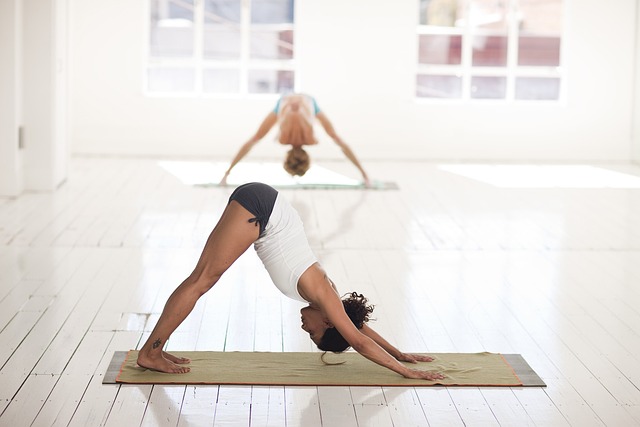
Physically, yoga helps to increase flexibility, strengthen muscles, and improve balance, reducing the strain on painful joints and muscles.
Mentally, the practice of yoga promotes relaxation, reduces stress, and improves mood, all of which can have a positive impact on chronic pain.
Furthermore, yoga encourages mindfulness and self-awareness, allowing individuals to better understand their bodies and make healthier choices in their daily lives.
Restorative Yoga
Restorative yoga offers a multitude of benefits for individuals seeking relief from chronic pain. This gentle form of yoga focuses on relaxation and deep rest, allowing the body to heal and rejuvenate. Here are some restorative yoga benefits and poses that can help individuals break free from chronic pain:
- Increased relaxation: Restorative yoga helps activate the parasympathetic nervous system, promoting deep relaxation and reducing stress levels.
- Improved flexibility and mobility: Restorative yoga poses gently stretch the muscles and joints, increasing flexibility and improving range of motion.
- Enhanced body awareness: Restorative yoga encourages individuals to listen to their bodies and become more attuned to their physical sensations, helping them identify and address areas of pain or discomfort.
Some popular restorative yoga poses include Child's Pose, Legs-Up-The-Wall Pose, and Supported Bridge Pose. These poses can be modified to suit individual needs and can be practiced with the support of props such as bolsters, blankets, and blocks.
Incorporating restorative yoga into a regular self-care routine can provide individuals with the freedom to manage their chronic pain effectively.
Mental Resilience
Building mental resilience is essential for individuals seeking to break free from chronic pain and enhance their overall well-being through yoga therapy. Resilience training focuses on developing the ability to bounce back from adversity and cope with stress in a healthy way.
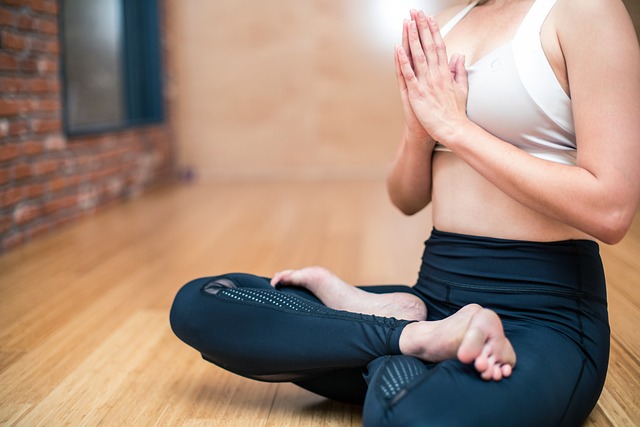
Chronic pain can take a toll on mental well-being, leading to feelings of frustration, anxiety, and depression. Yoga therapy offers several techniques that can help individuals build mental resilience and improve their mental well-being.
Through mindfulness practices, breathwork, and meditation, individuals can learn to cultivate a sense of calm and inner strength, enabling them to better manage their pain and emotions. Research has shown that yoga therapy can reduce stress levels, improve mood, and enhance overall mental well-being.
Mindful Meditation
Continuing the exploration of mental resilience in the context of breaking free from chronic pain through yoga therapy, the next crucial aspect to discuss is the practice of mindful meditation.
Mindful meditation, also known as mindfulness practice, is a powerful tool for stress reduction and cultivating a sense of freedom from the grip of chronic pain. Here are three key benefits of incorporating mindful meditation into your life:
- Increased self-awareness: Mindful meditation helps you develop a deep understanding of your body, mind, and emotions. By observing your thoughts and sensations without judgment, you can gain insight into the root causes of your pain and learn to respond to them with compassion.
- Stress reduction: Chronic pain is often accompanied by stress and anxiety. Mindful meditation activates the relaxation response, reducing stress hormones and promoting a sense of calm and well-being. By focusing on the present moment, you can release tension and find relief from both physical and mental pain.
- Improved pain management: Research has shown that regular mindful meditation can enhance pain tolerance and reduce the perception of pain. By training your mind to stay present and observe sensations without resistance, you can develop a more positive relationship with your pain and decrease its impact on your life.
Incorporating mindful meditation into your daily routine can be a transformative step towards breaking free from chronic pain. By cultivating mindfulness, you can develop the tools to manage stress, gain self-awareness, and ultimately experience a greater sense of freedom and well-being.
Frequently Asked Questions
How Long Does It Take to See Improvement in Chronic Pain Through Yoga Therapy?
The timeline for experiencing improvement in chronic pain through yoga therapy varies depending on individual factors such as the severity of the condition and consistency of practice. However, studies have shown that regular yoga practice can be effective in reducing chronic pain over time.
Can Yoga Therapy Completely Eliminate Chronic Pain?
While yoga therapy can provide numerous benefits for managing chronic pain, it is important to note that it may not completely eliminate pain for everyone. It can be used as an alternative treatment alongside other therapies to enhance overall well-being.

Are There Any Specific Yoga Poses or Exercises That Should Be Avoided for Certain Types of Chronic Pain?
Yoga therapy for chronic pain: What poses to avoid? Certain types of chronic pain may require caution when practicing yoga. Individuals with back pain should avoid forward folds, while those with knee pain should avoid deep knee bends. Consult with a qualified yoga therapist for personalized guidance.
Can Yoga Therapy Be Used in Conjunction With Other Pain Management Techniques, Such as Medication or Physical Therapy?
Yes, yoga therapy can be used in conjunction with other pain management techniques such as medication and physical therapy. Research shows that incorporating yoga therapy into a comprehensive treatment plan can enhance its effectiveness in managing chronic pain.
Are There Any Potential Risks or Side Effects of Practicing Yoga Therapy for Chronic Pain?
When considering the potential risks and side effects of practicing yoga therapy for chronic pain, it is important to acknowledge that while yoga therapy can be effective, it also has limitations. It is best to consult with a healthcare professional for a personalized combination therapy approach.
 Business & FinanceHealth & MedicineTechnologyLifestyle & CultureScience & EnvironmentWorld NewsPrivacy PolicyTerms And Conditions
Business & FinanceHealth & MedicineTechnologyLifestyle & CultureScience & EnvironmentWorld NewsPrivacy PolicyTerms And Conditions
